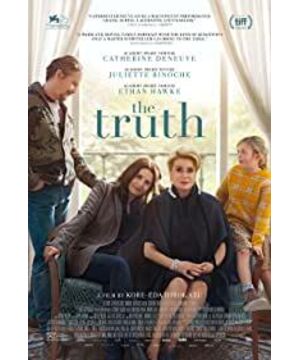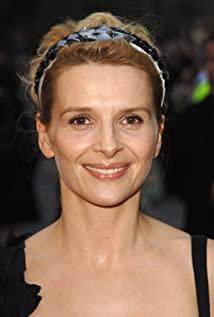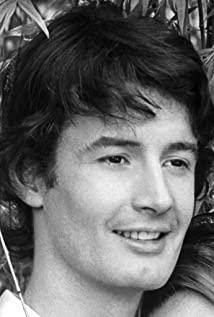Author: csh
This article was first published in "Gyro Movie"
The "truth" as the title of the film has actually provided the most central clue to the interpretation of this work. The sense of dislocation between other things and the truth, as well as the efforts of the characters in the film trying to get close to the truth, constitutes the most complicated intertextual maze of Hirokazu Kee. And the plot of the family plot he used well was just a wall in this maze.
The protagonist of this film Fabien is a famous French actress. It is hard not to associate this role with the actor Catherine Deneuve who played her. Taking advantage of the publication of her memoir, her daughter Lumir (Juliet Binoche) returned to Paris with her husband and children. However, this journey revealed a series of memories of mother and daughter mixed with pain and injury.
During Lumir's visit, Fabien was also shooting a film called "Reminiscences of My Mother". This "play in play" is adapted from the science fiction novel of the same name by the Chinese writer Liu Yukun. In this novel, a mother who is seriously ill and has only two years of life expectancy, in order to be able to witness the growth of her daughter, jump into the universe in a spacecraft, trying to slow down the progress of time.
From this novel, we can realize the first dislocation discussed in "The Truth"-the dislocation of time and space and truth.
In Liu Yukun's work, the mother brought gifts to her daughter, including a dress that was too small and a set of books that were too old. But her daughter didn't like these gifts. What she wanted was a guitar, but her father thought she was too young to be suitable for such an instrument. At the end of the novel, the mother tenderly told her, "Let's stay up all night. We will do all the things that father says you can't do."
What's interesting is that in the gifts and promises of mothers, all we read are gifts from the "past" and "future". Clothes and books belong to the past, while guitars and "everything left" belong to the future.
Due to the vast universe and the long-term estrangement, the mother and daughter, who are already unfamiliar with each other, will never be able to share this moment. In this novel using first-person narrative, this sense of confusion is quite real. The so-called emotional truth is precisely something that is sandwiched between the past and the future and is never possible to obtain.
In "The Truth" which directly refers to this novel, we can also see this misplaced isomorphism.
The more simple version is reflected in the conversation between Fabiena and another actress in the film about age. Fabiana played the role of Amy (73 years old), and the actor played the younger version of her (38 years old). They talked about the technique of using movie special effects to deal with looks, but in their joking dialogue, this technique was given a sense of absurdity.
However, the deeper isomorphism is still related to Fabiana's deep memory. The reason why she took over the project at hand was precisely because the "daughter" Manon with whom she played the opposite role was very similar to the legendary actress Sara who died young. Sara was once a close friend of Fabiana and treated Lumir like a biological mother. However, Fabien has used unspoken rules to compete with Sara in order to get her favorite role.
This love-hate past is immersed in the plot of the film. For Fabiana, Manon may be Sara in a different time and space, but she will never be able to "talk" with Manon. Because some of the most precious things have been lost forever.
Of course, everything about Manon was completely obliterated in Fabiana's memoirs. This precisely involves the second type of dislocation in "The Truth"-the dislocation of narrative and truth.
In fact, we already realized this theme in the first scene. The terrified reporter threw those rigid questions to Fabien, but all the narratives about her were in her own hands.
Her adjustment and "polishing" of the memoir even angered her daughter Lumil. However, when her daughter questioned her, she said righteously: "I am an actor, and I won't tell the whole truth."
As the plot progresses, we will gradually realize that, in fact, the "narrative" of our daughter Lumir is also one-sided and incomplete. In the hands of Fabien, there is also a story that Lumir did not know. The information they provide is like fragments gradually approaching the truth.
If the dislocation of time and space mirrors the dissipated real world, then the dislocation of narration mirrors the signifier and the void of the signified, the effort to find meaning and structure in a desperate way. The daughter came to Paris all the way to find her own story, and the mother wrote her memoir to finalize her own past. But obviously, they failed to do so after all.
Of course, in this intertextual labyrinth that adopts the "meta-movie" structure, the most complicated is still the dislocation of art and truth.
In Liu Yukun's novel, the mother who suffers from illness chooses a spacecraft that "extends" her time as her refuge. For Fabiana, the art of cinema is both a disease and a refuge. Are roundabout rhetoric and polished aesthetics really more reliable than one-sided narratives?
Fabien is undoubtedly a conceited actor, but she also has the capital of conceit. For her, suffering is the material of creation, and all the pain is to help her create better performances. But from another perspective, the movie also swallowed her life, making her family and friendship a victim.
But the movie did not help her find the truth. The incarnation of Sarah still haunts her, haunting like an undead. Catherine Deneuve's impressive performance made us see a bit of hesitation hidden under the rock-solid iron surface. For her, movies may always be "the asymptote of the truth."
All references to artistic genres reinforce this hesitation: the structure of meta-films, the similarities and differences between movies and novels, and even the so-called "unacceptable"-Hirokazu Kee mentioned in an interview that there was a producer When commenting on the script, he said, "Children of this age will not sleep in the same bed with their parents", but he still retains these deviations.
Towards the end of the film, it was Hirokazu Edema in scheduling the "reconciliation" scene between Fabien and Lumir, and the above three dislocations were vividly manifested.
At the beginning of the scene, he used a cautious, long-range double lens to examine the two characters. The two were separated by the props Lumir brought—between them, there was still a certain gap. However, as the conversation progressed, Lumir gradually realized that in the distant past, her mother seemed to have cared for her that she did not know.
In a series of pros and cons close to each other, the distance between the two gradually approached. In the end, after revealing their hearts, the two fell into close close-up close-ups. However, Fabien suddenly said sharply that she should use these emotions in her performance. At this time, in the same scene, Lumier slipped into the blurred shallow focus image of the background.
We saw that the two tried to travel through time and space to complement the narrative. Fabiana even said at one point that if the memoir was reprinted, she would add the content she had told Lumir frankly. However, under the erosion of "movie art", they once again separated from each other-even in the nearest scene, there will be a gap between the foreground and the background.
In this film called "The Truth", we follow the path of Fabiana and Lumir, attacking the so-called "truth" time and time again. However, until the end of the film, we still do not know whether the truth exists. Perhaps the truth lies only in the process of finding the truth, or perhaps the instantaneous nature of the reconciliation drama is precisely the essence of the truth.
Thornton Wilder once wrote: “If Queen Elizabeth, Frederick the Great or Ernest Hemingway read their own biography, they would shout:'Ah! My secret has not been revealed!' But if When Natasha Rostov read "War and Peace", she would cover her face with her hands and scream:'How would he know? How would he know?'"
However, the characters in the book will of course be amazed by the creator's supernatural power. What the onlookers overlook may be just a labyrinth of truth that has turned thousands of times.
View more about The Truth reviews











